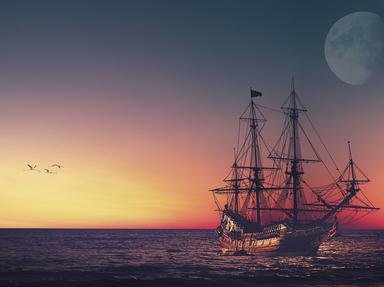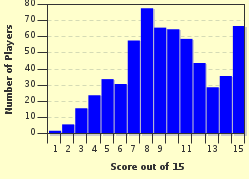Quiz Answer Key and Fun Facts
1. This man was the first to map Newfoundland, the first to record the transit of Venus across the sun, the first European to set foot in eastern Australia, the first to go south of the Antarctic Circle and the European who discovered the Hawaiian Islands. Who is this man who met an untimely demise in Hawaii in 1779?
2. Which Spaniard was the first to cross the Isthmus of Panama and reach the Pacific Ocean only to later run afoul of Francisco Pizarro?
3. Which conquistador discovered Chile and also fell victim to Pizarro?
4. This Scotsman discovered the Niger River in Africa in July 1796 and mysteriously disappeared there on his second journey in 1806. Who was he?
5. Which European discoverer of the Mississippi River had to be buried in secret when he died so that the natives of the region would not realize that he was not immortal?
6. Which Spanish explorer completed the first documented navigation of the length of the Amazon River?
7. Which Norwegian explorer was the first to explore both the North and South Poles and died during a rescue mission?
8. This English sea dog, privateer and courtier sailed further south than any other person in 1578, and ten years later was a hero of the battle with the Spanish Armada. Who was this explorer who died in Panama in 1596?
9. This famed Dutch explorer published an atlas of the Mediterranean and was the discoverer of many of the planet's most northerly islands. Who was this explorer of the Arctic which ultimately claimed his life and has an area that bears his name?
10. This British naval surgeon was a passionate botanist and extensively explored Australia, being the first to describe a wombat. Who was this man who died en route to Tahiti?
11. Who was the U.S. Naval officer and explorer of the Amazon who went down with his ship in 1857 which had 15 tons of gold on board?
12. One of the most famous of the Antarctic explorers, this man journeyed in an open boat in the Southern Ocean to bring help to his stranded crew from the ship "Endurance". Who was this outstanding explorer who died during his last expedition in 1922?
13. This Danish explorer of the Arctic discovered some of the Aleutian islands as well as exploring much of the northern Pacific and Kamchatka Peninsula. Who was this man who has a geographic location named after him?
14. This famed English explorer of the eastern United States has many sites in North America named for him. Who was this man who died after he was set adrift by his mutinous crew?
15. Some explorers looked farther than the planet Earth. Which U.S. astronaut was the first American to walk in space and died in a fire in 1967?
Source: Author
pshelton
This quiz was reviewed by FunTrivia editor
bloomsby before going online.
Any errors found in FunTrivia content are routinely corrected through our feedback system.

